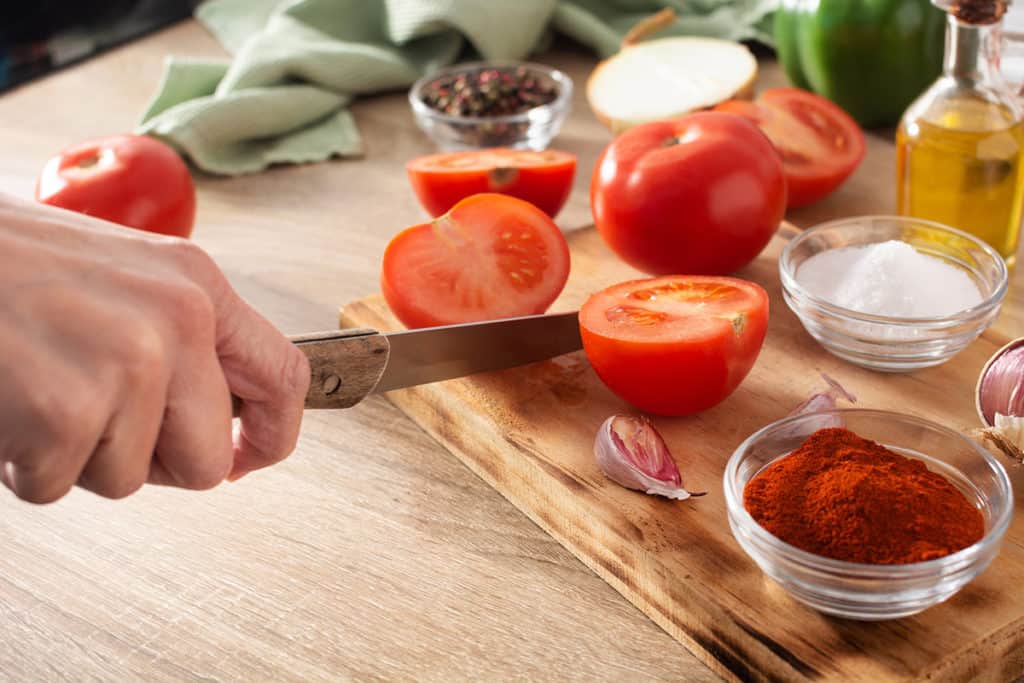Mastering the skill of how to properly cut food with a knife is not only essential for professional chefs but is also a game-changer for home cooks. Whether youre cutting vegetables for a salad or slicing meat for a roast, knowing proper cutting techniques can save you time, improve your cooking precision, and ensure safety in the kitchen.

Why Learning to Cut Food Properly is Crucial
Before diving into the techniques, let us first understand why learning how to properly cut food with a knife is critical:
- Safety First: Proper knife skills reduce the risk of accidental cuts.
- Efficiency: Proper cutting speeds up food preparation and ensures even cooking.
- Aesthetic Appeal: Uniformly cut items improve the visual appeal of your dishes.
Understanding Knife Basics
1. Choosing the Right Knife
The type of knife you use plays a significant role in achieving proper cuts. Here are some commonly used kitchen knives:
- Chefs Knife: A versatile tool for cutting most foods.
- Paring Knife: Great for small tasks like peeling or cutting fruits.
- Serrated Knife: Ideal for bread and other items with tough exteriors.
2. Proper Grip for More Control
Knowing how to hold the knife is essential for ensuring clean and precise cuts. Grip the knife handle firmly with your four fingers while wrapping your thumb around for stability.
Different Cutting Styles Explained
1. Slicing
Slicing is a smooth motion used for cutting thin pieces of meat, fruit, or vegetables. Slide the knife forward and backward while pressing lightly for consistent slices.
2. Dicing
Dicing involves cutting food into small, uniform cubes. Its most commonly used for vegetables like onions, carrots, and celery. Dicing an onion correctly can elevate your cooking presentation.
3. Julienning
Julienning creates thin, matchstick-shaped slices, often used for garnishes or stir-fry. It takes precision, but the results are worth the effort.
4. Chopping
Chopping is a less precise but quicker method used for larger cuts. Vegetables like bell peppers and herbs can be chopped efficiently.
Step-by-Step Guide on How to Cut Common Foods
1. Handling Vegetables
Properly cutting vegetables is vital for an even cook. For detailed steps, review how to cut French fries with a knife.
2. Cutting Fruits
Fruits often require different techniques due to their unique textures. Check out this guide on Mango cutting tips for smoother results.
3. Managing Proteins
When cutting meat, always slice against the grain for maximum tenderness. Additionally, use a clean, sharp knife to prevent tearing.
Knife Safety Tips for Beginners
- Keep your knives sharp to minimize slippage.
- Use a non-slip cutting board to hold food steady.
- Always hold food with a claw grip to avoid injuries.
Frequently Asked Questions
1. How do I choose the best type of knife for home use?
A chefs knife is highly versatile and an excellent choice for most tasks.
2. Why is sharpening my knife essential?
A sharp knife reduces effort, ensures precision, and is overall safer to use than a dull blade.
3. Can I use the same knife for everything?
While you can, using specialized knives for specific tasks gives better results.

Conclusion
Mastering how to properly cut food with a knife is a tremendous skill worth learning. With the right tools, techniques, and consistent practice, anyone can elevate their food preparation abilities. For inspiration on unique cutting styles, check out these fancy cutting techniques. Whether for aesthetic appeal or cooking efficiency, proper knife skills make an undeniable difference.
This article contains affiliate links. We may earn a commission at no extra cost to you.


